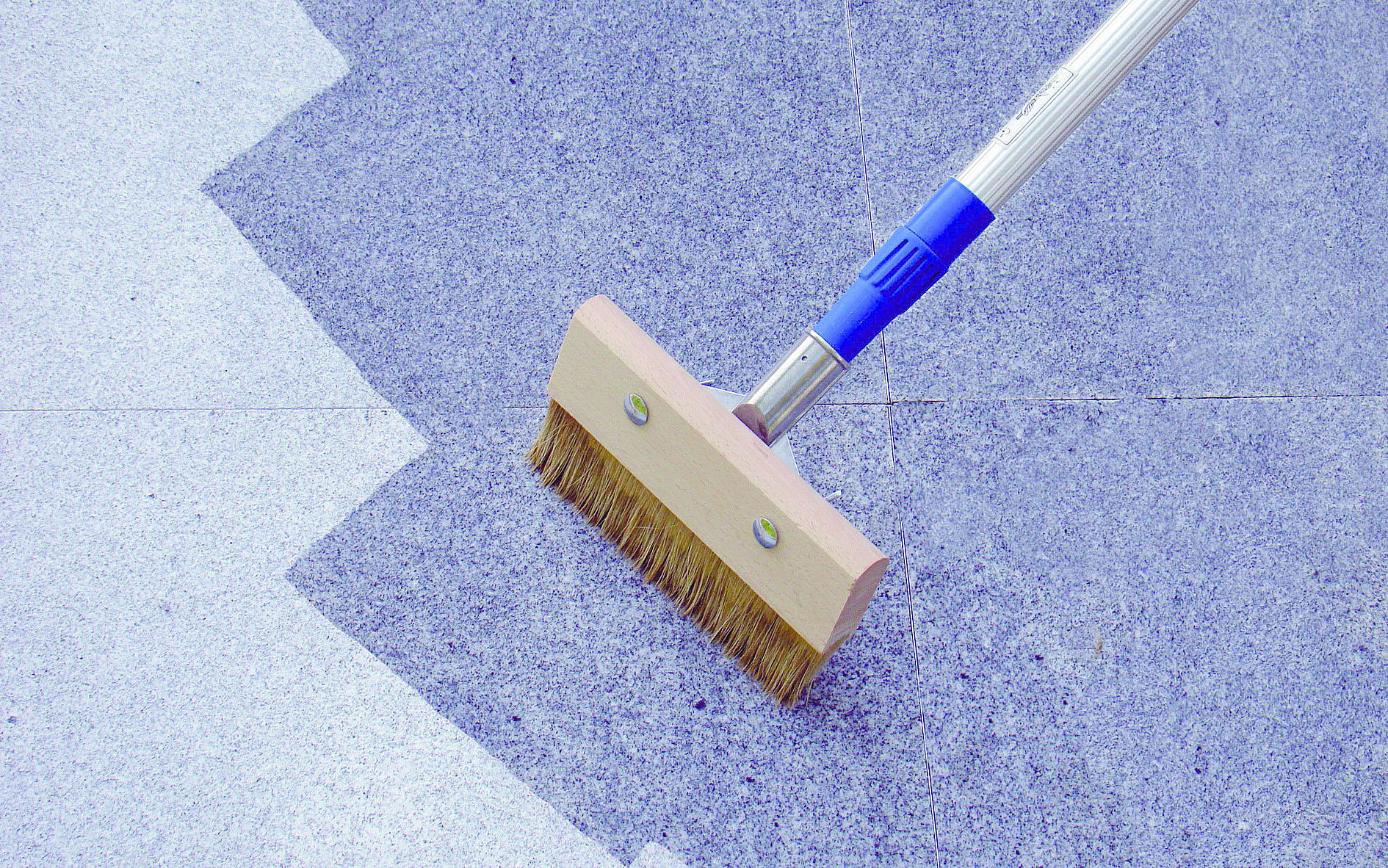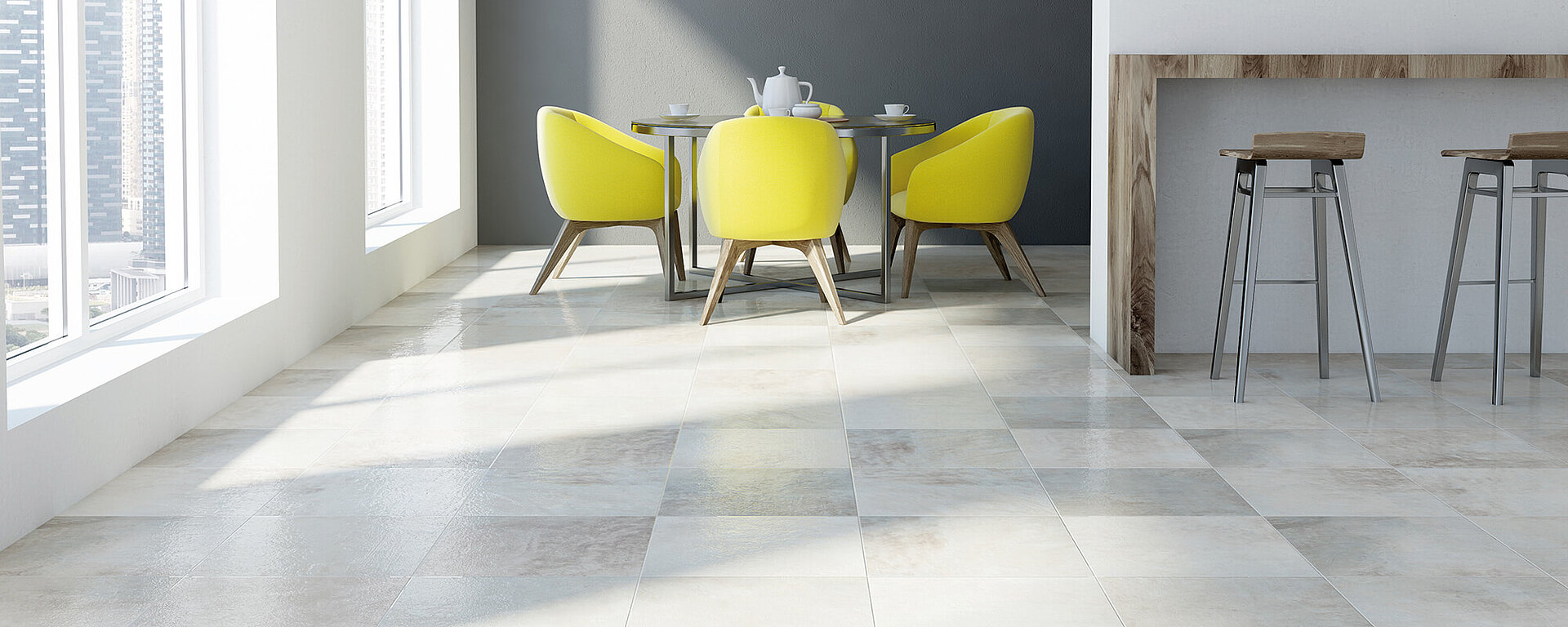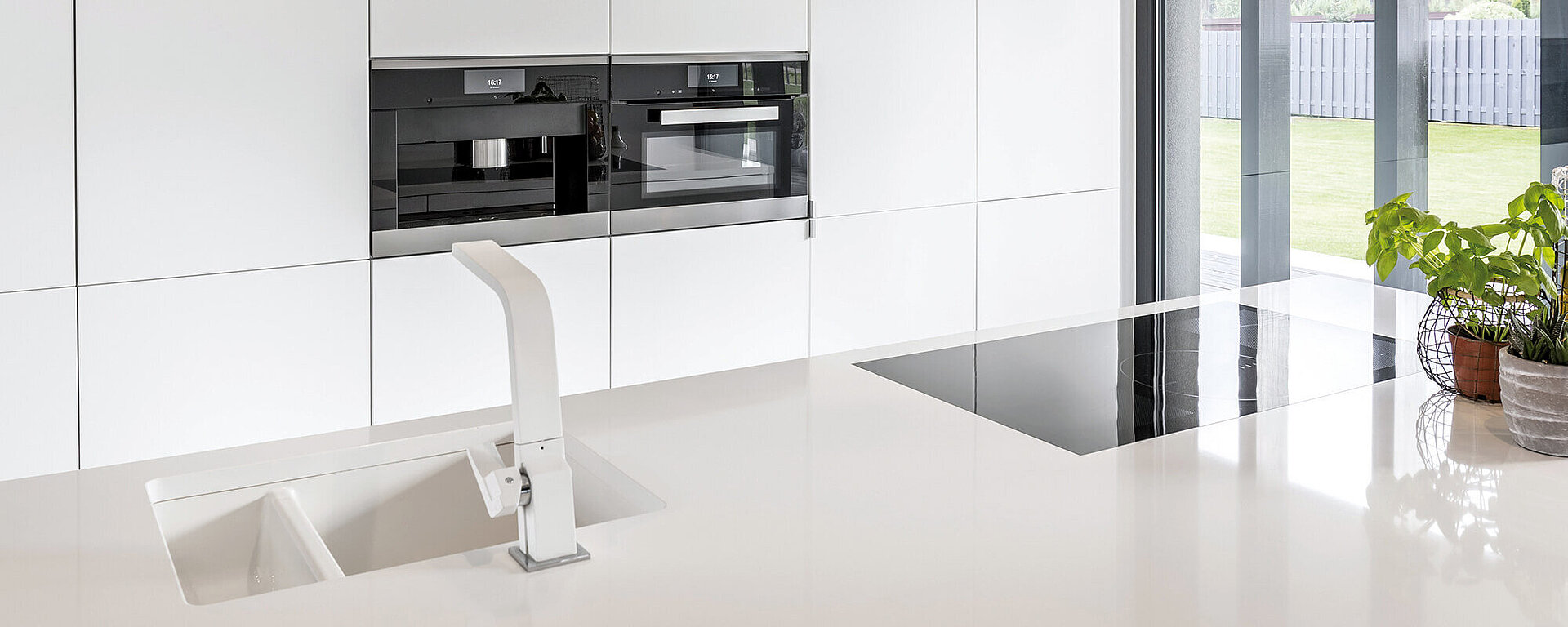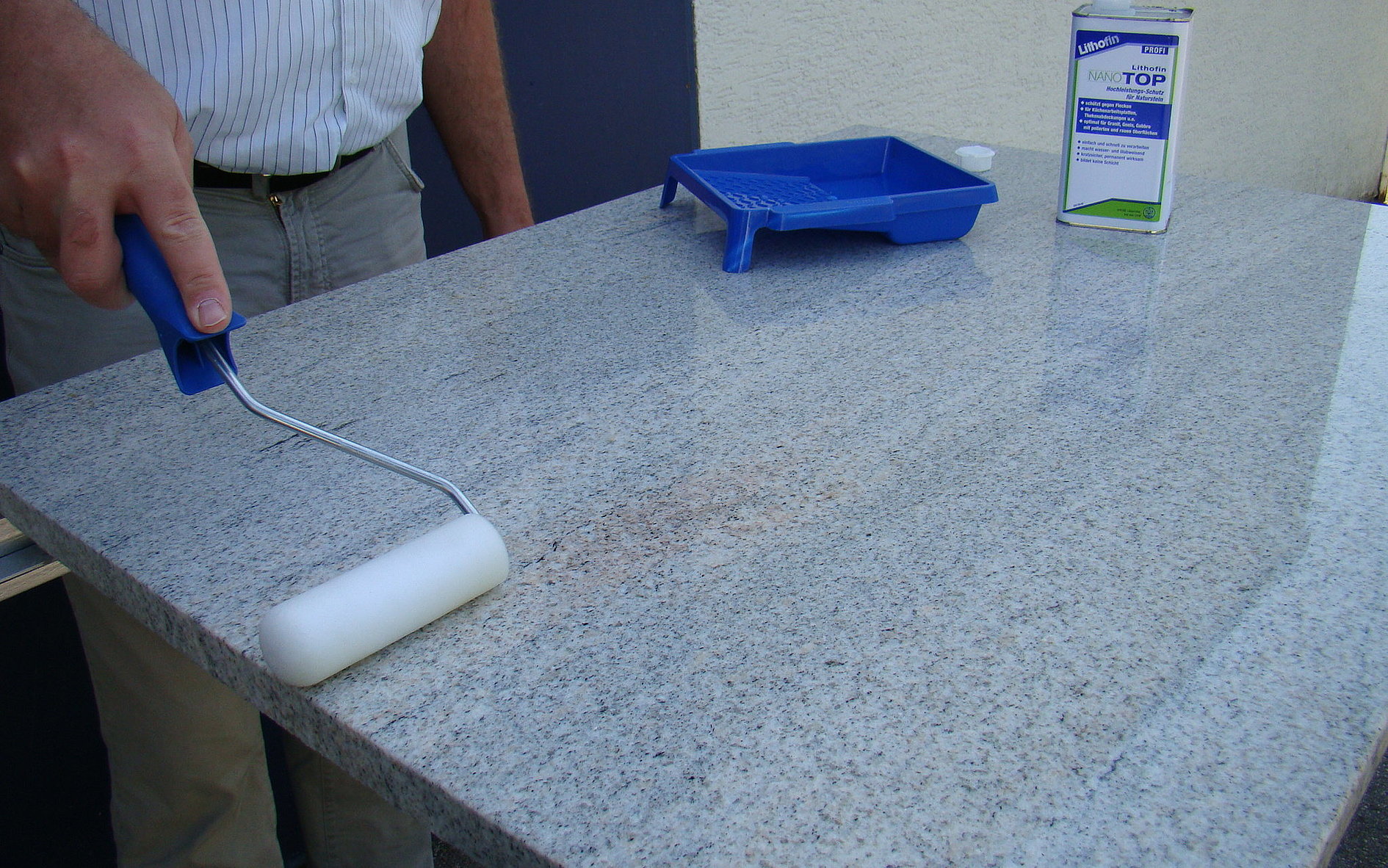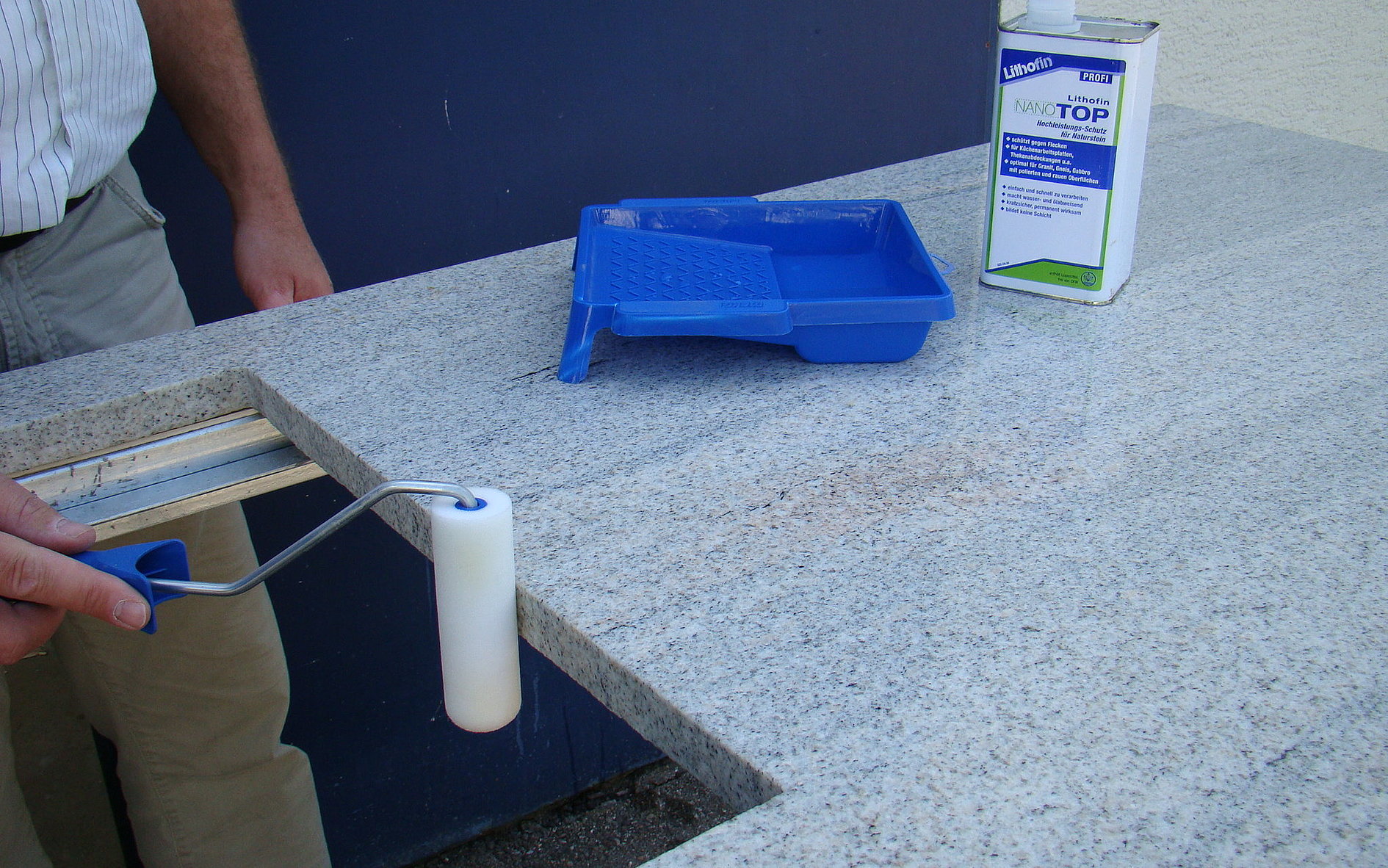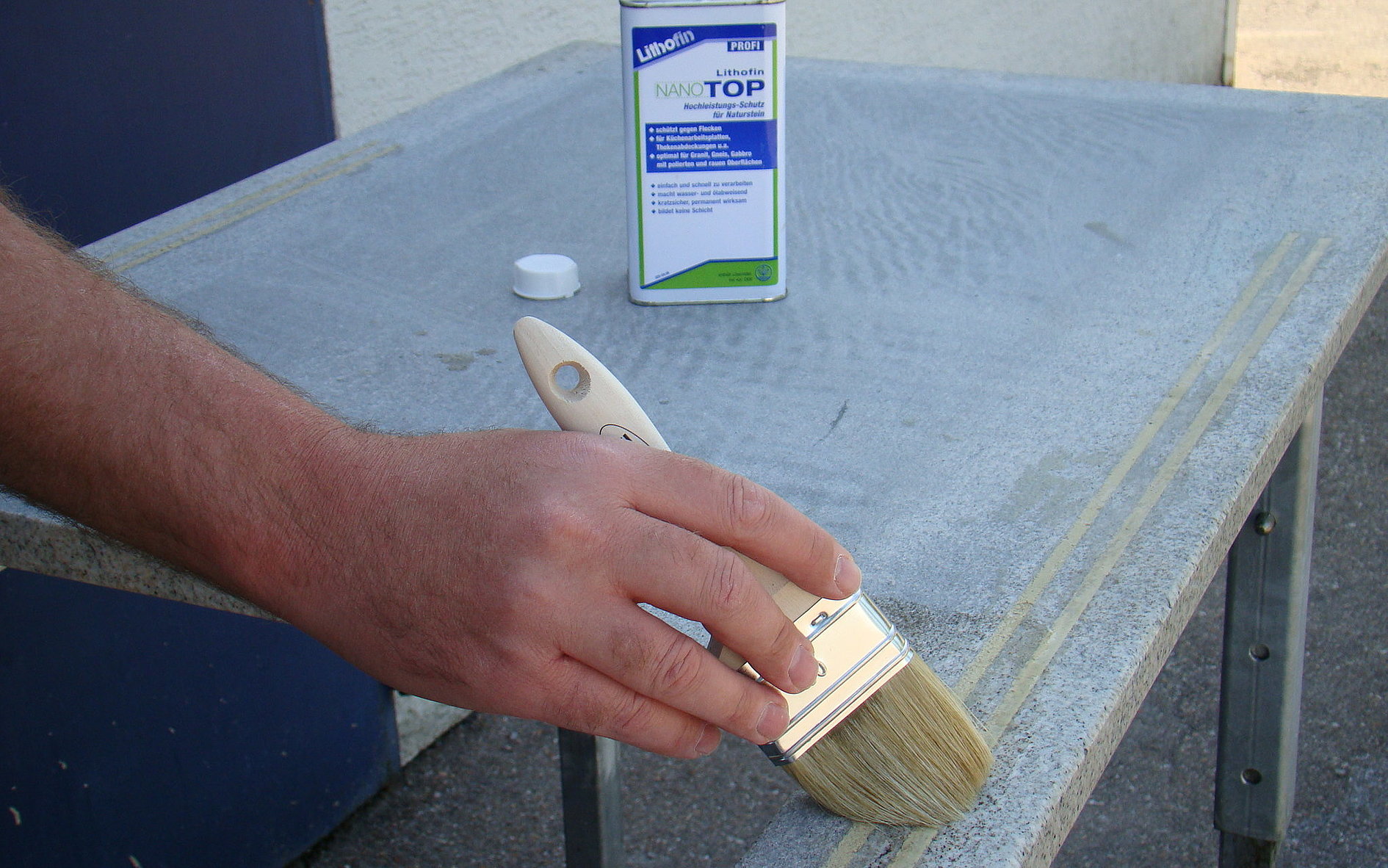Protect natural stones - but properly
General information about impregnations
Have you just decided on a natural stone kitchen countertop or newly laid the terrace with natural stone slabs? Or perhaps a long time ago, when you just moved into your home? You probably invested a lot of time to find exactly the design that suits your taste and completes your living environment. Natural stone is a wonderful material. In our eyes, what's valuable should be protected. The protective treatment for natural stone is impregnation.
Because from a technical point of view, the following is happening as time goes on:
The capillary absorbency of a natural stone varies from rock type to rock type. In the course of time, natural changes occur due to stone-specific components. Optical changes that are not inherent to the stone but are caused by foreign substances are stains.
Staining can be prevented by impregnation. Depending on the type of impregnation, the natural stone can be protected against contamination by water, grease and oil. In addition, they facilitate cleaning and maintenance.
What is an impregnation?
Impregnations prevent thorough staining of natural stone surfaces by being absorbed into the structure of the stone. Due to the reduced capillary absorbency, stains caused by water, grease and oil can hardly occur.
An impregnation leaves a thin film of active substances on the capillary walls in the stone structure. To transport this into the capillary system of the natural stone, impregnating agents and active substances are dissolved in either water or solvents. Reducing the capillary absorbency reduces the risk of hard-to-remove stains and makes the stone water-, oil- or grease-repellent, depending on the ingredients. In the process, the water vapour diffusion capacity is reduced to a small extent.
Are there different types of impregnations?
There are water-based impregnations as well as solvent-based impregnations. These can be colour-neutral or colour-intensifying.
Raw slabs that will later be used to produce kitchen worktops, washbasins, etc. are often already resinated (resinated) in the factory. On such hydrophobic surfaces, only solvent-based systems can penetrate efficiently and develop the necessary protection in the capillary systems. Water-based systems are suitable for other areas of application.
When do I use colour-deepening impregnations?
The rather roughening surface finishes, such as flaming, sandblasting, brushing, etc., require less depth of colour than the polished finish. The individual desire for more structure is fulfilled by the group of colour-enhancing impregnations. These products make the surfaces also dirt and oil repellent.
So where are impregnations used?
The protective treatment with an impregnation is primarily used where natural stone surfaces are exposed to extreme stain formers (e.g. fats, oils, vegetable dyes, tannic acids). These can be kitchen countertops, washstands or outdoor terraces.
How do I apply the impregnation?
The use of surface brushes or sealer brushes has proven to be effective as applicators for rough surfaces. Due to the high area coverage, there is enough time to rework any puddles or streaks. Excess should be removed thoroughly (especially important for polished surfaces indoors). On floor surfaces, paint rollers are not recommended as an applicator, as they often cause streaking due to overlapping application. It is advisable to create a sample surface in advance to get a feeling for the application quantity and the result.
What must be ensured during processing?
In order to develop the protective effect, correct application is required. Regardless of the area of application, optimum saturations can only be achieved if the surface is dry, clean and free of grease.
Wait for the correct temperatures (especially when applying outdoors): The optimum surface temperature is between 10°C and 25°C. The drying time is approx. 20 - 30 minutes, depending on temperature and substrate. The full effect develops within approx. 2 to 5 days. During this time, the surface should not be exposed to water or oil.
Application area: Floor
Practical advice
Lithofin also offers suitable impregnations for interior and exterior floor surfaces. In outdoor areas, maintaining water vapour diffusion is a particular requirement for the protective treatment. Water-dissolved impregnations such as the product Lithofin FLECKSTOP >W< are ideally suited for use on outdoor surfaces, as they are less sensitive to residual moisture.
To comply with the drying time after laying the floor, the following guide values can be used as a benchmark
| Newly laid surfaces | drying time |
|---|---|
| in medium bed | approx. 2 to 4 weeks |
| in thin bed | approx. 2 weeks |
| Crystalline setting | approx. 3 to 4 days |
Application area: Kitchen worktop
Practical advice
Lithofin is dedicated to the development of high-performance impregnations. With food compatibility confirmed by an independent testing laboratory, Lithofin NanoTOP and Lithofin FVE are especially suitable for kitchen worktops.
The products are ideally applied with a brush. Make sure that in addition to the cut-outs, the reverse side is also treated at least 10 cm around all edges. Any residues should be removed completely before drying and polished with a melamine pad. An advantage of both impregnations is that they can be applied and transported quickly after drying: this takes only 1 or 2 hours.
All features at a glance
To ensure that your natural stone looks beautiful long after it has been laid and is easy to maintain at the same time, a protective treatment is definitely recommended. There are many impregnations that have different properties. Some protect against quick soiling, others additionally against stains caused by oil and grease, still others have a colour-deepening effect.
With our overview you can get a quick overview of the properties of our impregnations.

